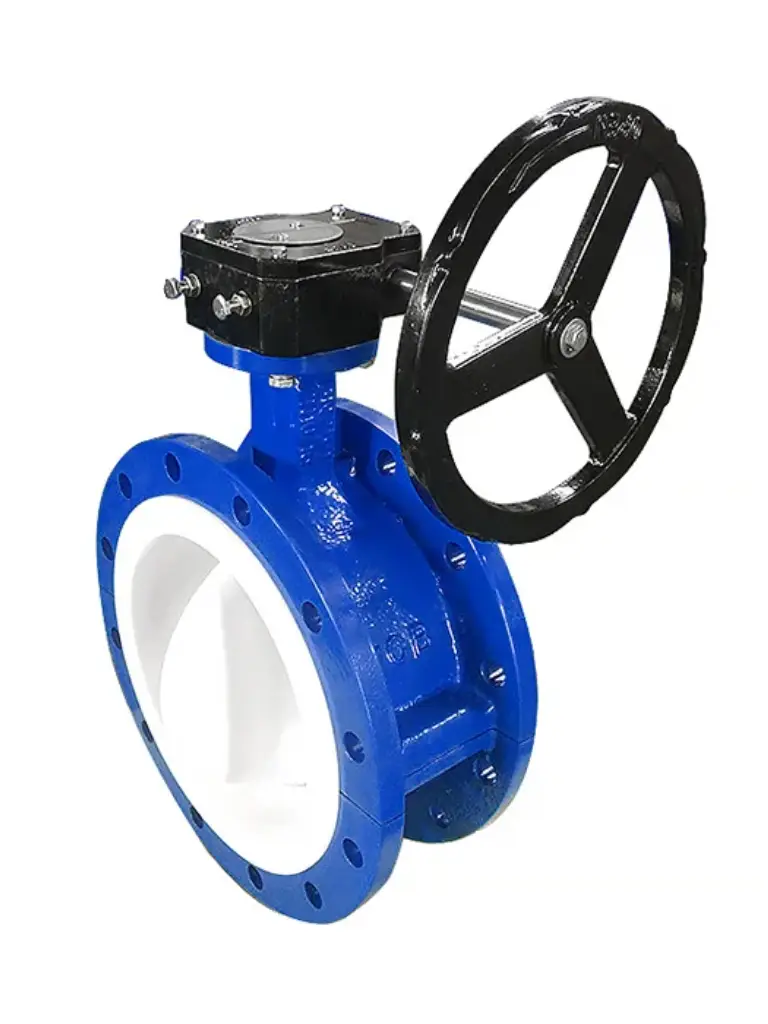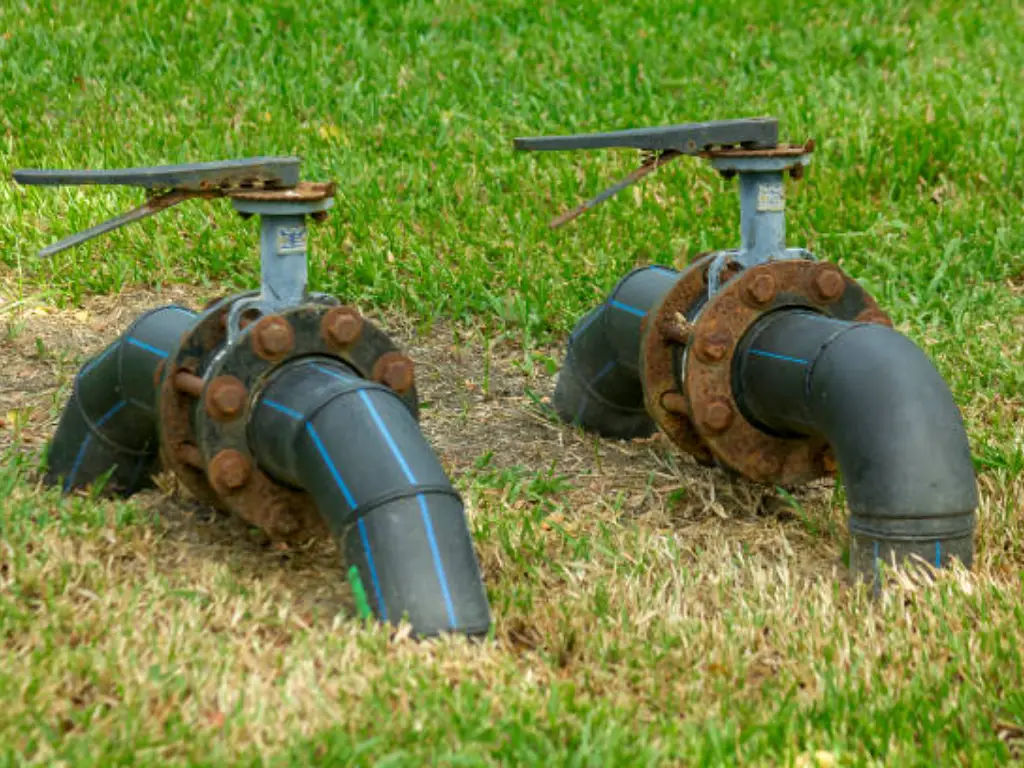When it comes to the management of the flow of liquids in both the industrial and residential areas, the selection of the valve is of great importance to the system since it can either improve or deteriorate the efficiency and effectiveness of the system. Among different valve types, butterfly valves are advantageous in terms of valve selection and have been proved to be one of the most widely used due to its high functionality and low cost. However, the question is what exactly the reason is for the choice of butterfly valves when there are many other options available like the ball valves, gate valves and the control valves? This article is all about the advantages of butterfly valves compared to other valves in flow control and their common usage in specific applications. Regardless of the role you play, either as an engineer, a technician, or a fluid dynamics enthusiast, you will find the understanding of the role and benefits of butterfly valves to be a great addition to your toolkit.

What Are Butterfly Valves? Functions and Types
The butterfly valve’s design is simple. It consists of a disc design, a rod (also known as a shaft), and a seat. This type of valve regulates the flow of fluids with a quarter-turn rotation mechanism that moves the disc from a fully closed to a fully open position parallel to the fluid flow.
Functionality
- Flow Regulation: Controls, stops or starts the flow of fluids effectively with small pressure drop.
- Quick Operation: Provides for rapid activation and deactivation, suitable for systems that need to be quick-shut-off.
- Versatility in Use: It could be used in many applications and under various conditions, both high and low pressure environments.
- Throttling Capability: Capable of a precise control of the flow volume by means of the disc angle adjustment, which is required for the process optimization.
- Leak Prevention: As the disc is closed, the entire pipe section is blocked which minimizes leakage.
Construction and Materials
- Resilient Seated Butterfly Valves: These have a rubber seat and the body made of materials like cast iron, ductile iron, or stainless steel. They are normally used in low-pressure applications where chemical compatibility and tight sealing are required.
- High-Performance Butterfly Valves: Manufactured of metal seat and typically double or triple offset design to minimize the wear and tear on the valve during operation, these are suitable for the higher pressure and temperature environments and they are more durable.
Types
- Zero Offset Butterfly Valve: A flat disc rotates in the center of the pipe and is perpendicular to the flow at the closed position, which is suitable for general and light industries.
- Double Offset Butterfly Valve: The disc is offset from the shaft center, ensuring less contact between the disc and the seat during operation, which in turn reduces wear. It is often employed in high pressure and high temperature systems.
- Triple Offset Butterfly Valve: A conical shaped disc is provided which provides a shear action and tight sealing with very little wear. Designed for critical and severe service applications involving high pressures and temperatures.

Can Butterfly Valves Serve as Control Valves?
Butterfly valves and control valves are both the essential parts of the modern flow control systems. Contrary to their traditional uses, butterfly valves can still be used as control valves due to their shared fundamental characteristics and operating principles.
Shared Characteristics
- Regulatory Functions: Flow regulation is the common task of both butterfly valves and control valves, but butterfly valves achieve this by moving the disc to vary the passage area, whereas control valves adjust flow parameters based on feedback from process conditions.
- Quick Operation: Butterfly valves are similar to control valves in that they operate rapidly allowing for fast flow rate adjustments. This is especially important when the system needs to respond quickly to changes in the conditions of the environment.
- Throttling Capability: Throttling is one of the main functions of the control valves and butterfly valves are just as good as the others in this regard. By adjusting the angle of the disc, butterfly valves can precisely regulate the flow rate, which is vital for processes where the flow volume and pressure are variable.
Having such features, butterfly valves not only provide the function of isolation but also are superior in flow control and thus are a good choice in many industrial applications. Their adaptability in function and installation makes them a perfect option for those cases where traditional control valves do not work as well.

Advantages of Using Butterfly Valves for Flow Control
Butterfly valves are widely used for fluid management systems in different industries due to their high efficiency. The distinctive design and operation of these structures provide the advantage of flow control in the domain of flow control.
Compact and Lightweight Design
Butterfly valves are known for their compact design thus making them suitable for installation in tight spaces without sacrificing performance. Through this design, both the space and the pipping materials and supports are reduced which in turn reduces the cost. For instance, a 24-inch butterfly valve weighs approximately 70% less than the gate valve of a similar size, hence, they are easier to install and maintain.
Cost-Effectiveness
Simplicity in design of butterfly valves makes them less expensive than most other types of valves especially in the larger sizes. Generally, the price of butterfly valve is 20-30% less than the ball valve of the same diameter. This cost-effectiveness covers the installation and maintenance as well, because of the simplified mechanism which takes away the need for much labor and downtime, which in turn results in lower lifecycle costs.
High Performance in Flow Regulation
Butterfly valves are used to get precise control over the fluid flow. They can be used for isolation as well as regulation with high efficiency. They are fast working, with the capability to go from full open to full closed in a quarter turn. This immediate action eases the flow of fluids which is essential in case of emergency and safety.
Butterfly valves are made to carry different pressures and are efficient for systems with a wide pressure range. They usually can withstand pressure drops of up to 1630 kPa (kilopascal), which makes them suitable for both high and low-pressure applications.
Enhanced Durability and Reliability
Generally made of sturdy materials such as stainless steel and ductile iron, the butterfly valves are designed to cope with corrosive environments, high pressures, and temperature extremes. Durability is also enhanced by variations in the design such as double and triple offset configurations that minimize the wear and tear on the sealing surfaces, thus extending the operational life of the valve.
Proper maintenance will allow butterfly valves to serve well over a decade. The extended life span is a function of the simple design, which has few parts that can fail.
Versatility
The sphere of application of butterfly valves is broad, comprising water and wastewater treatment, HVAC systems, chemical processing, and others. They are especially useful in the wide diameter pipes where the weight and size of valves would otherwise be a major cost factor. Their versatility not only covers their ability to integrate with manual, electric, pneumatic, or hydraulic actuation methods, but also their capacity to work with automated systems.
Environmental Impact
Butterfly valves which are environmentally friendly in nature conserve the resources and energy by ensuring that materials are used efficiently. The capacity which they have to regulate flow precisely helps to reduce waste and boost system efficiency, this is very important in industries which are seeking to be sustainable.
Hence, the use of butterfly valves for flow control is not only efficient from the engineering and operational standpoints but it also has economic and environmental benefits. Unique properties they possess such as their compactness, agility in operation, and durability make them an ideal choice for a variety of applications, which proves their position as a backbone of modern flow control technology.

Key Applications of Butterfly Valves in Flow Control
Butterfly valves are multifunctional and efficient, therefore, they are highly preferred in many sectors where the precise flow control is required. Their unique feature of being able to instantly identify and control the movement of fluids make them the best choice in emergency and big-scale operations.
Water and Wastewater Treatment
In water treatment plants, butterfly valves are employed to control the fluid flow through the treatment processes by providing the best efficiency. They play a role in the operations from simple on/off functions to more complicated ones such as flow regulation during chemical mixing or biological treatment phases. They can withstand the different pressures and corrosive substances that are usually present in water treatment plants, making them an ideal choice for clean water applications.
HVAC Systems
Heating, Ventilation, and Air Conditioning (HVAC) systems are used to control the air flow in commercial buildings, as well as in residential and industrial buildings by using butterfly valves. Their capability to adjust the flow of water in a manner that ensures the environment is in the optimum condition and the energy is conserved is one of the factors that makes them popular. The small size of butterfly valves, coupled with the ease of integration into various components of an HVAC system, means that they do not need a lot of space.
Chemical Processing
Butterfly valves are main components of the chemical industry, where they are used to control the flow of liquids, gases, and even solids in some cases. They are very good at opening and limiting the flow, a characteristic necessary for the required precision in chemical reactions and processes. The chemical resistance of the materials for the high-performance butterfly valves guarantees their resistance to the most aggressive and corrosive conditions.
Power Generation
At the power plants, butterfly valves can be used to treat slurry and to regulate the flow of water in the cooling systems which are a crucial part of the power generation process. They have a high-flow-low-pressure-drop capacity which makes them the best fit for such operations.
Food and Beverage Production
The butterfly valves are designed to fulfill the rigorous hygiene specifications in the food and beverage industry. They are used as a valve to control the flow of different liquids and ingredients during the process, which in turn ensures that the final product tastes and looks good. The simple operation and maintenance of butterfly valves assures the prevention of cross-contamination between batches.
These applications demonstrate that butterfly valves are very important in the modern industry, since they offer the basis services that are necessary for the smooth running of the industry in terms of safety, efficiency and reliability. The table below succinctly summarizes the applications of butterfly valves across various industries, highlighting their primary functions and benefits in each sector:
| Industry | Primary Functions | Benefits |
| Water & Wastewater Treatment | Control flow through treatment processes | Durability to handle varying pressures and corrosive materials |
| HVAC Systems | Regulate air flow in buildings | Precise flow modulation for optimal energy efficiency |
| Chemical Processing | Control flow of liquids, gases, and solids | Excellent shut-off and throttling in corrosive environments |
| Power Generation | Manage slurry and cooling water systems | Efficient handling of large flows at low pressure drops |
| Food & Beverage Production | Control flow of liquids and ingredients | Hygienic design ensures quality and prevents contamination |
Selecting the Right Butterfly Valve for Your Needs
Selection of the proper butterfly valve for your flow control application is vital to make sure that you get the best performance, reliability and cost effectiveness. Several main points should be taken into account when making this decision.
- Valve Size: The first step in choosing the butterfly valve is to figure out the right valve size. The size of the valve should be determined by the pipe diameter and the needed flow rate of your system. The selection of a valve that can deal with the expected flow volume without causing a high pressure drop or flow restriction is important.
- Pressure Rating: Make sure that the pressure rating of the butterfly valve is the same as the maximum operating pressure of the system. The valve should be capable of sustaining the anticipated pressure range without the structural integrity or sealing performance being compromised. Check the valve manufacturer’s specifications to confirm that the valve has the required pressure rating.
- Material Compatibility: Choose a butterfly valve material that matches the fluid process and the operating environment. Take into account corrosion resistance, temperature range, and chemical compatibility features. Stainless steel, ductile iron, and polymer-lined bodies are commonly used for butterfly valve materials. Each material has its own advantages, thus you should select the one that is optimal for your use.
- Actuation Method: Decide the right actuation method for your butterfly valve that matches the level of control and automation you need in your application. Actuation is a common option that can be done either manually or by using pneumatic, electric, or hydraulic devices. Manual actuation is good for simple on-off control but automated actuation methods provide precision and remote control capabilities.
- Flow Characteristics: Reflect on the flow characteristics you want to achieve for your application and pick the butterfly valve that will meet the necessary control performance. The flow characteristic of a valve is determined by the valve design, which can be linear, equal percentage or quick-opening. Select a valve that is able to meet your process needs and also provides a steady and accurate flow control.
- Seal Material: The seal material of a butterfly valve is a decisive factor in ensuring that the valve performs without leakage. Choose the suitable seal material that works with the process fluid and offers the required level of leak tightness. The typical seal materials are EPDM, FKM and PTFE. Think about the temperature range, chemical resistance, and durability of the seal material to ensure a long-term reliability.
- Brand and Quality: Select butterfly valves from the well-known suppliers who have a history of delivering superior products. Pay attention to the brands which provide robust design, reliable performance, and exceptional customer support. Spending on excellent valves from reputable manufacturers may give long-term advantages regarding dependability, efficiency, and reduced maintenance costs.
Through thorough assessment of these factors and working together with valve professionals, you will be able to choose the best butterfly valve that fits your specific flow control needs. Trying to make a smart decision that is based on facts will help your system run with maximum efficiency, reliability, and costs effectiveness in the future.
Conclusion
To sum up, butterfly valves are an excellent choice in flow control for numerous industries because of their multifunctional features, budget-friendly price, and high operational efficacy. They present a rather practical solution to the problem of the conventional control valves, especially in the case of large-diameter pipe applications where their compact, lightweight design and quick operation can lower the installation and maintenance costs. Butterfly valves are not only the ones fulfilling the basic needs of isolation and regulation but are also the best in case of durability and easy use, thus becoming the most important ones in the modern industry applications. Their ongoing development and adaptation will remain to be in the coming years and they will continue to be a mainstay of flow control solutions.









